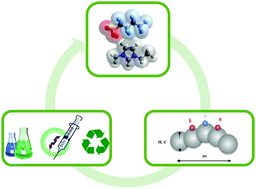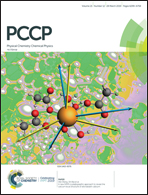Insights into the influence of the molecular structures of fluorinated ionic liquids on their thermophysical properties. A soft-SAFT based approach†
Abstract
Fluorinated ionic liquids (FILs) are a unique family of ionic liquids with remarkable properties, including the formation of three nano-segregated domains, which are very attractive for several emerging applications. However, the amount of available experimental data to fully characterize them is very scarce. We propose a systematic methodology to build FIL transferable molecular models within the soft-SAFT framework to describe the behaviour of FILs and their mixtures. A total of 38 FILs (pyridinium- and imidazolium-based FILs conjugated with fluorinated anions such as [N(CF3SO2)2]−, [CF3SO3]−, [CF3CO2]−, [C4F9SO3]− and [C4F9CO2]−) have been modelled for this purpose using available data, paying special attention to the physical meaning of the parameters. The models are used to obtain molecular insights into the influence of the anion and cation molecular structures on the thermophysical properties of the FILs. It is concluded that the anion and anion fluorination are the leading features in the thermophysical properties investigated, as captured by soft-SAFT. Models for three FILs not included in the parametrization study were built from the transferable parameters, in excellent agreement with experimental data, underlining the robustness of the soft-SAFT approach. The methodology presented here allows a direct connection between the molecular characteristics of the FILs, the influence on their behaviour, and how this can be captured by a molecular-based equation of state. The procedure allows assembling FIL models with high predictive capabilities in an intuitive way regarding the process of parametrization from the molecular structure, allowing us to characterize their thermophysical behaviour where limited experimental data are available.



 Please wait while we load your content...
Please wait while we load your content...